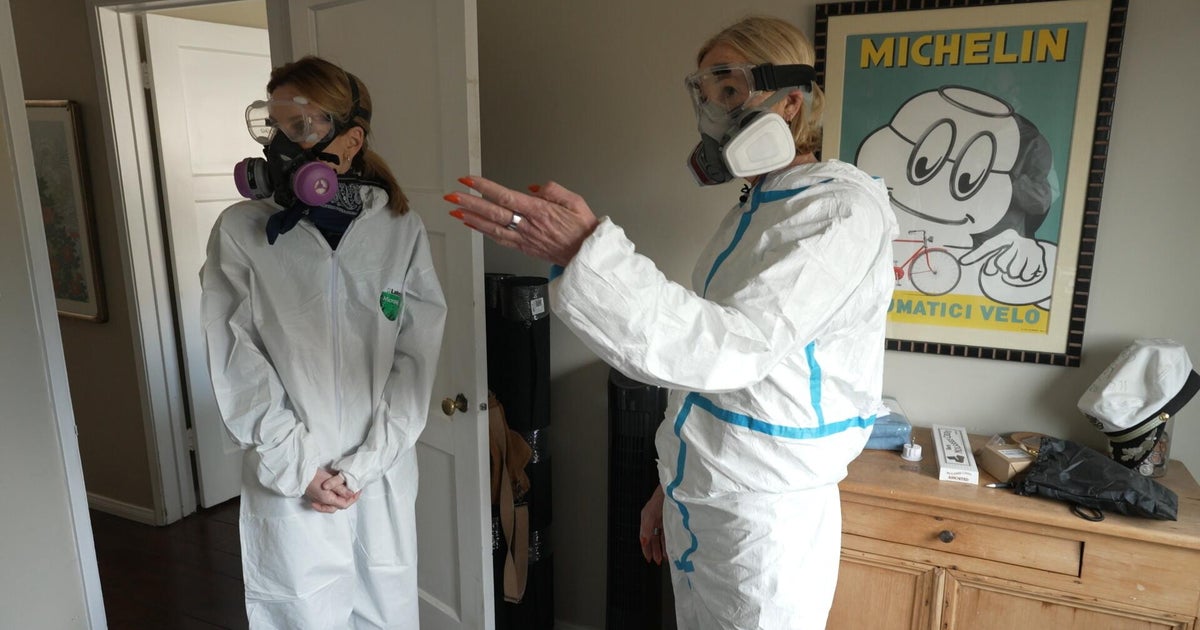Recreating Notre Dame's iconic spire
Four years ago, a raging fire burning at Notre Dame Cathedral in Paris shocked people around the world. On the streets of Paris, an audible gasp rippled through the crowd as the cathedral's flame-engulfed spire toppled over.
For this week's 60 Minutes, correspondent Bill Whitaker traveled to Paris to see firsthand the cathedral's restoration in progress, including an update on its iconic spire.
The spire's history
The spire that elicited a shock four years ago was not original to the cathedral. Built in the 13th century, Notre Dame's original spire was much smaller and had become so damaged over the ensuing centuries that it was removed in the late 1700s.
The spire was not the only thing in great disrepair at the time. During the first French Revolution, rioters looted and vandalized the cathedral after Catholic worship was banned in Paris. By the second French Revolution of 1830, revolutionaries had damaged the cathedral so badly that Parisian authorities considered demolishing the building.
That is, until a writer stepped in.
"Victor Hugo is the reason why she's still standing," French journalist Agnes Poirier told 60 Minutes.
A politician and formidable campaigner, Hugo wanted to preserve the cathedral. In a pamphlet titled "War on the Demolishers," Hugo wrote that, "A building has two things: its use and its beauty. Its use belongs to its owner, its beauty to everyone; to destroy it is to overstep one's rights."
After releasing his pamphlet, Hugo in 1831 published his novel "The Hunchback of Notre-Dame," known as "Notre-Dame de Paris" in French. The novel was an immediate success. Not only did it make Quasimodo known throughout France, as illustrations of the novel's central characters were mass printed—but it also turned Notre Dame Cathedral into a national symbol.
By 1842, the French government decided to restore the cathedral and hired a young architect named Eugène Viollet-le-Duc to help. During his architectural education, Viollet-le-Duc travelled around France, making detailed drawings of the medieval monuments and cathedrals he saw. When he built the new spire at Notre Dame in 1859, it looked as though it had been original to the cathedral.
Rebuilding the spire
Viollet-le-Duc's 19th century spire included 16 copper statues: 12 depicting the original apostles of Jesus and four symbolizing the evangelists. For the statue of St. Thomas, the patron saint of architecture, Viollet-le-Duc instructed the sculptor to use his face as the model.
Four days before the fire broke out in 2019, all 16 statues had been removed for previously scheduled cleaning and restoration and placed in a warehouse, where they would remain untouched by the flames that engulfed the rest of Notre Dame's spire. Now restored to their original copper color, the statues are on display at Paris's Cité de l'Architecture et du Patrimoine museum.
Today, rebuilding the spire has become one of the central parts of Notre Dame's reconstruction. Viollet-le-Duc's spire had been built from oak, with a base of stone and sides dotted with lead shingles. Now, using Viollet-le-Duc's own original sketches, engineers have cut down some 1,000 oak trees from all around France to rebuild it to Viollet-le-Duc's exact specifications.
Once the reconstruction is complete, the 16 statues will again take their place climbing up the side of the spire.
"At some time at the end of next year when the cathedral is reopened to the public, that spire is going to look as though it had never fallen," Whitaker said. "It's going to look as though it has always been there."
Editor's note: General Jean-Louis Georgelin, who led the reconstruction effort and whom 60 Minutes met at Notre Dame Cathedral, died earlier this month while hiking in the French Pyrenees.
The video above was originally published on April 9, 2023. It was produced by Brit McCandless Farmer and Will Croxton and was edited by Will Croxton.
Archival photos and video courtesy of AFP, Getty Images and RMN-Grand Palais (Ministère de la Culture) / Art Resource.



